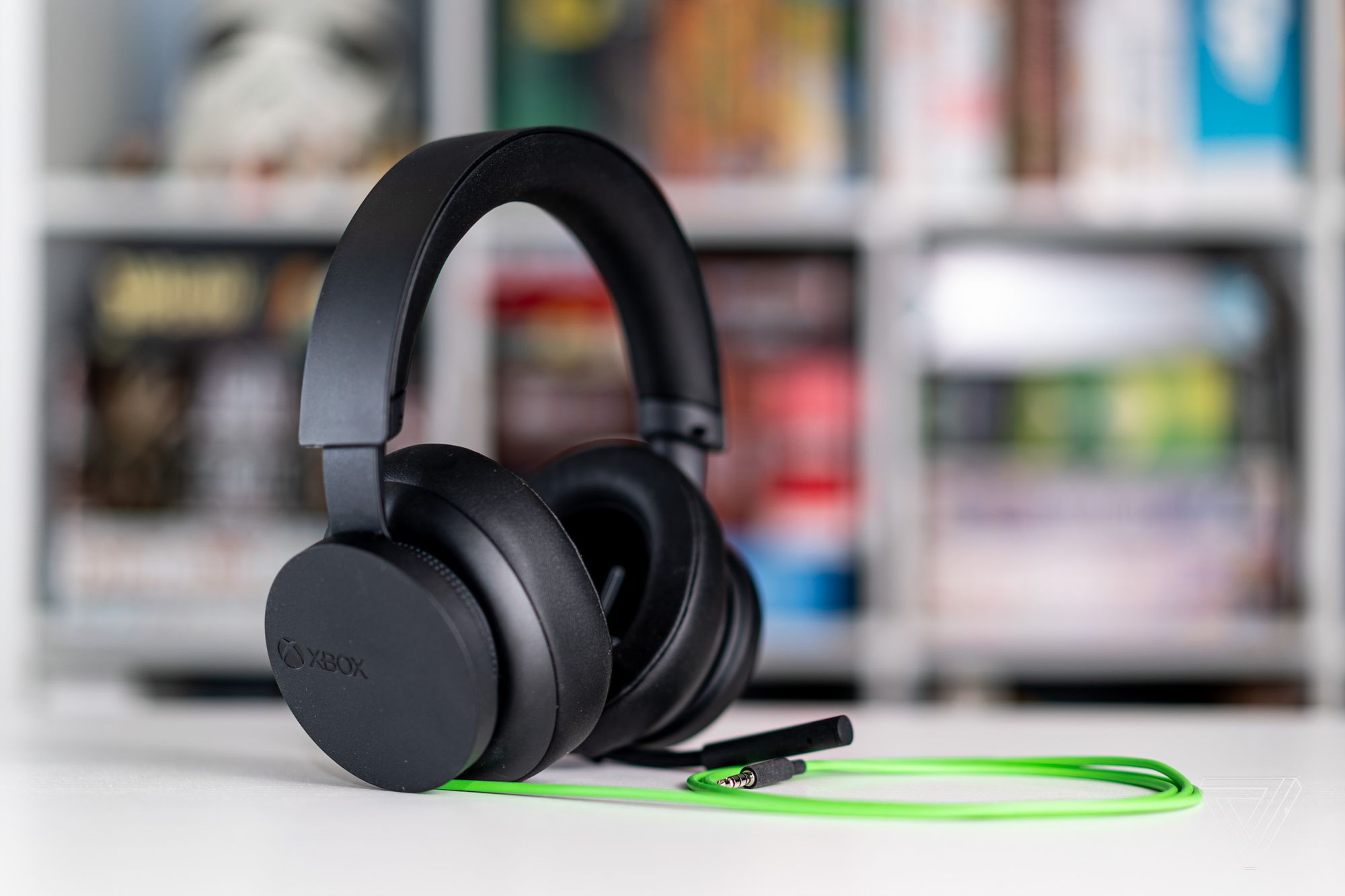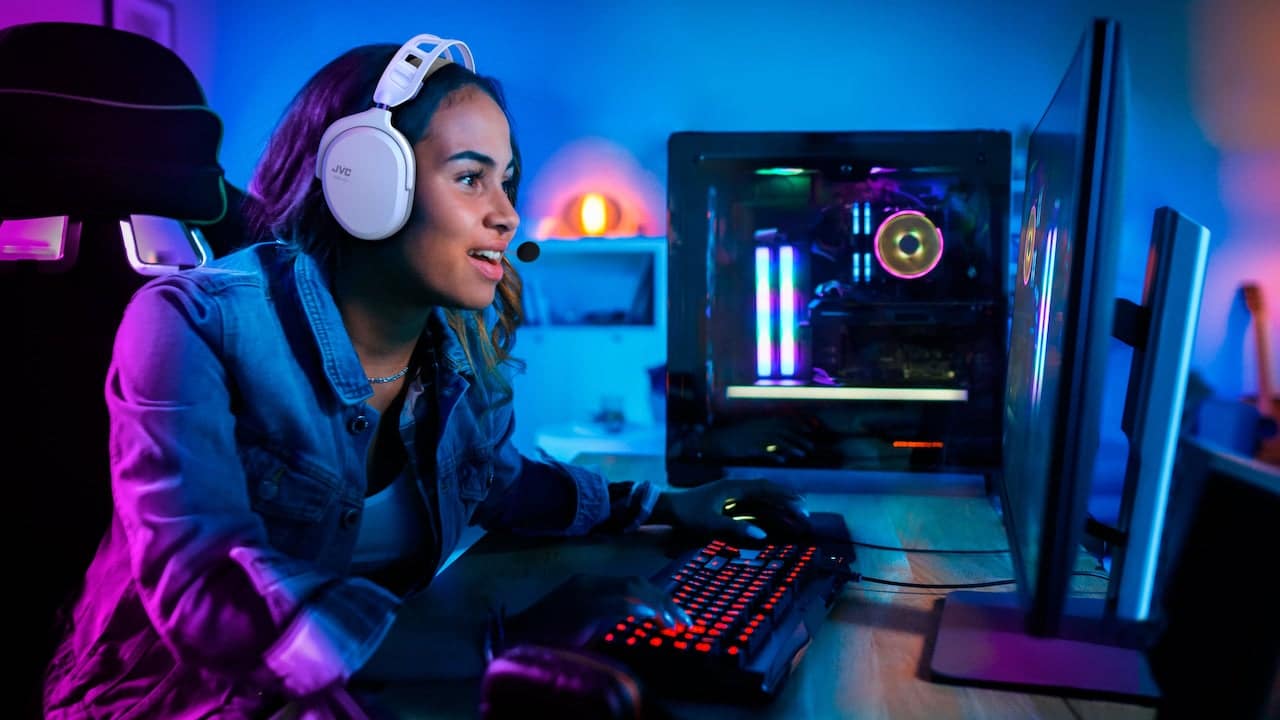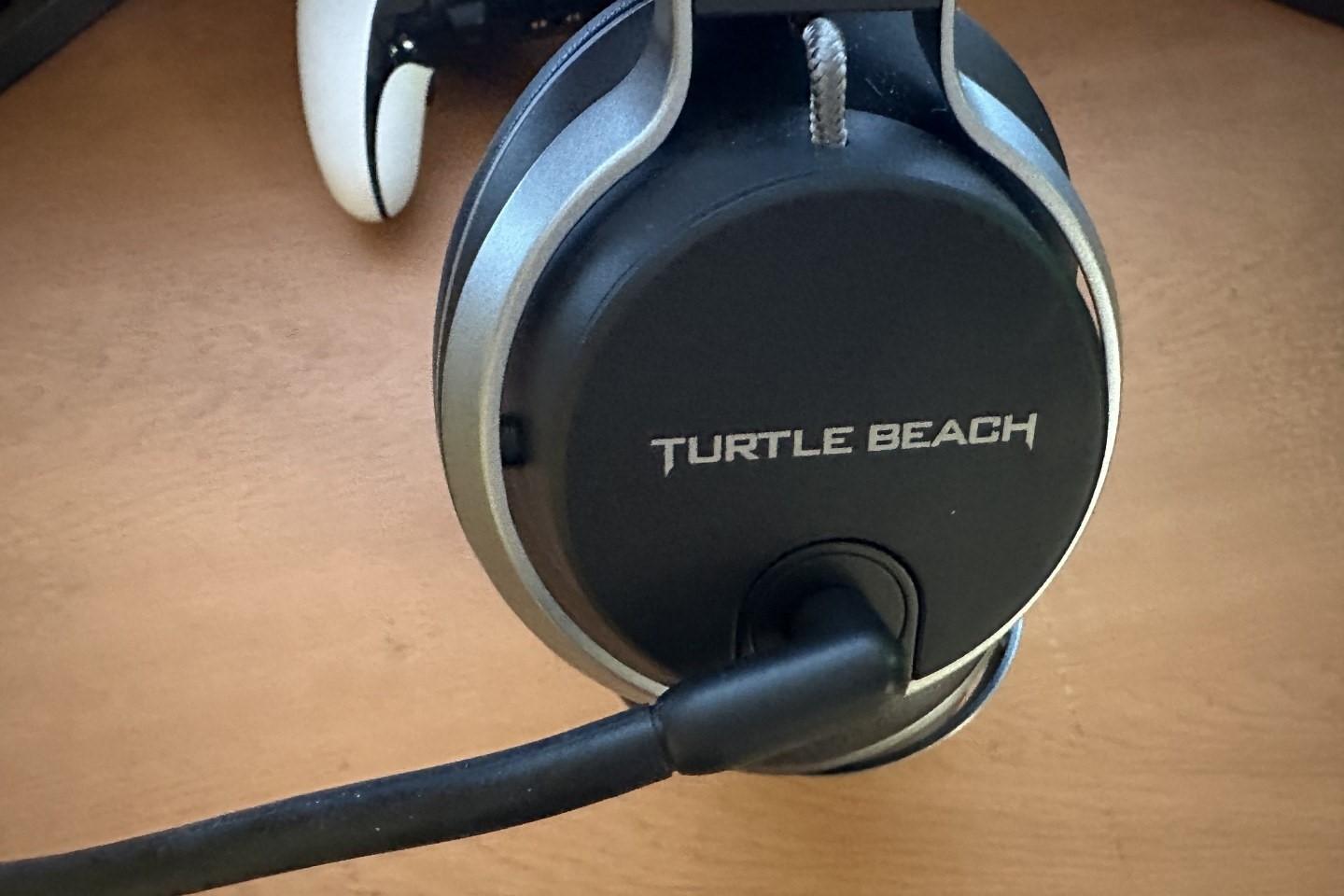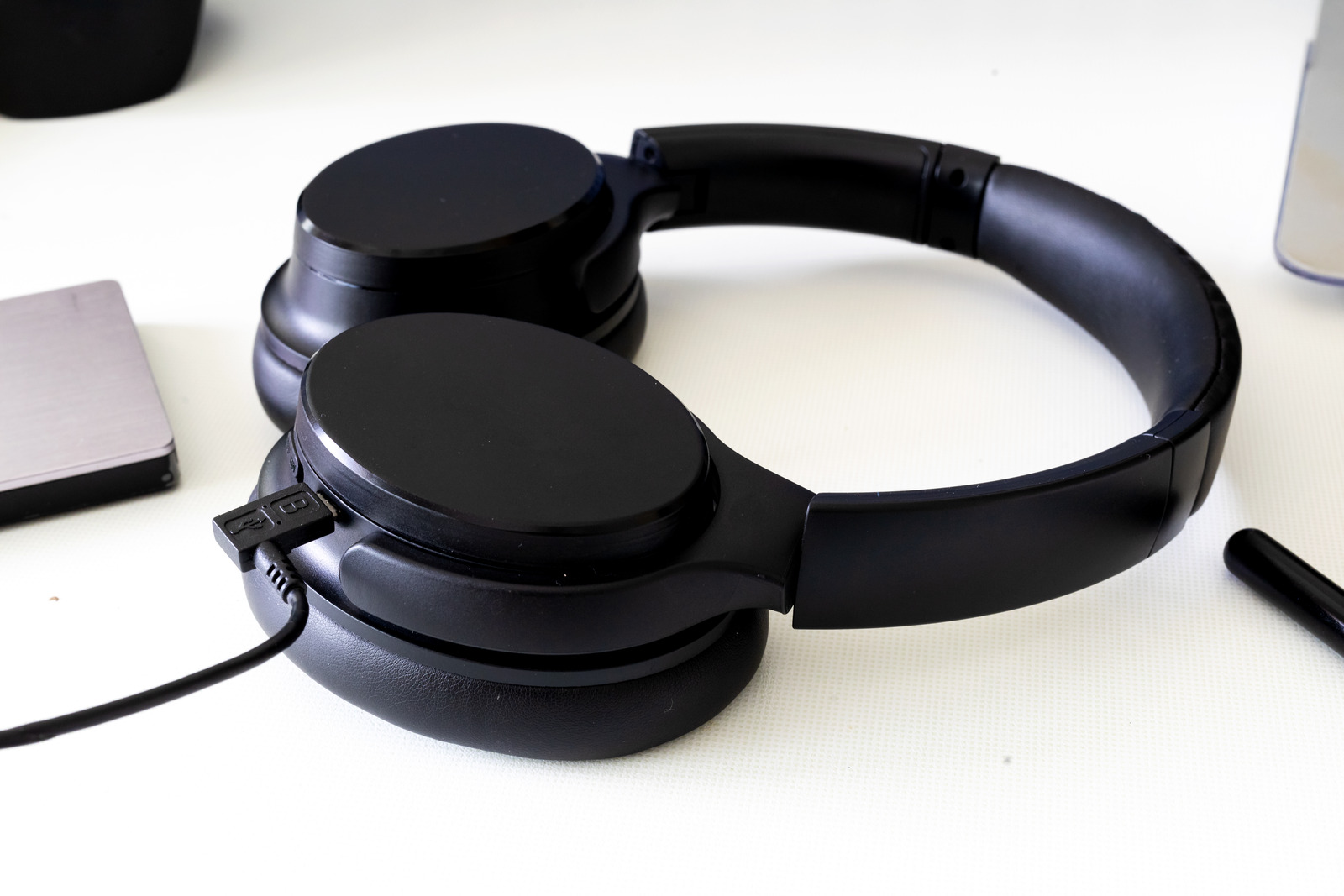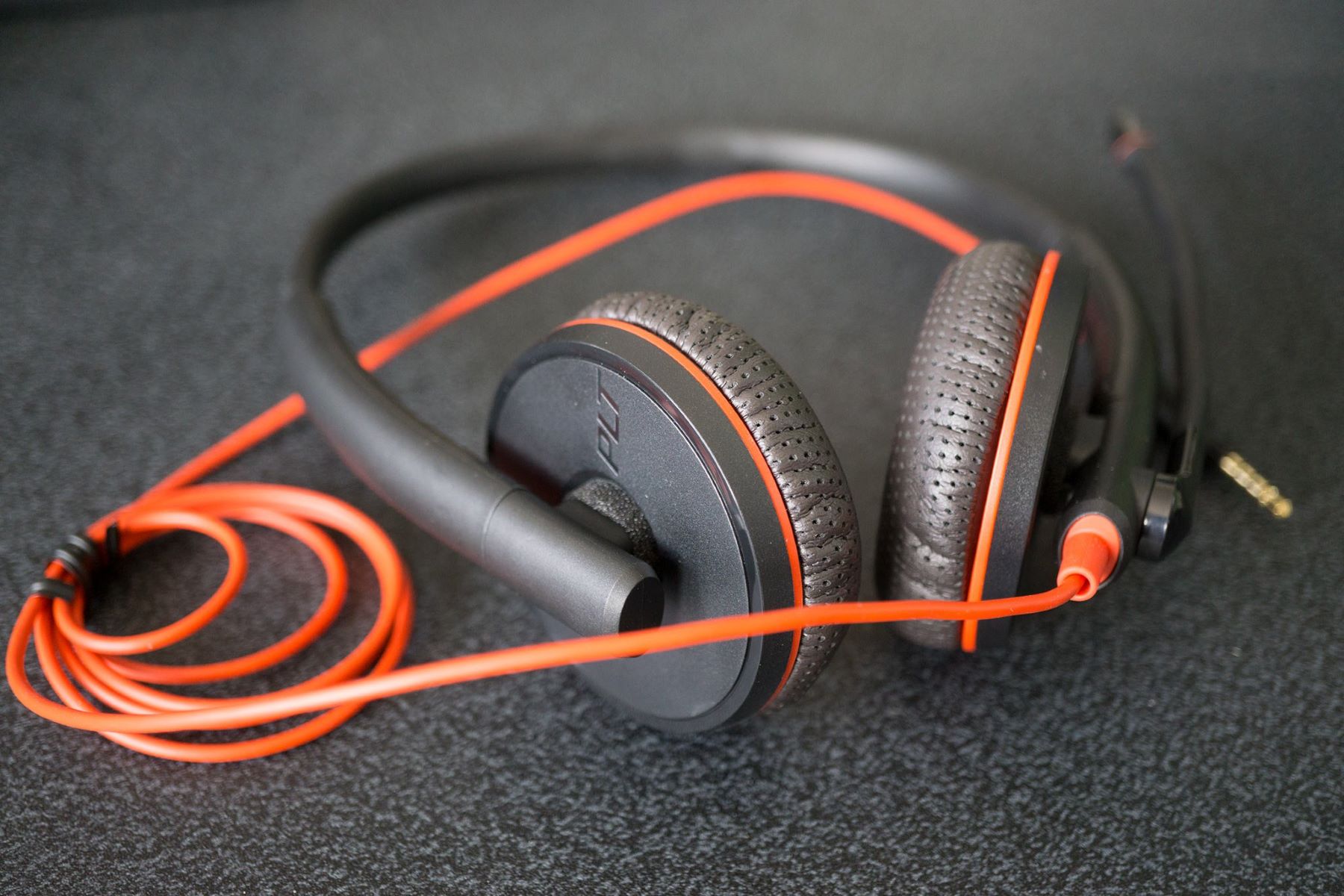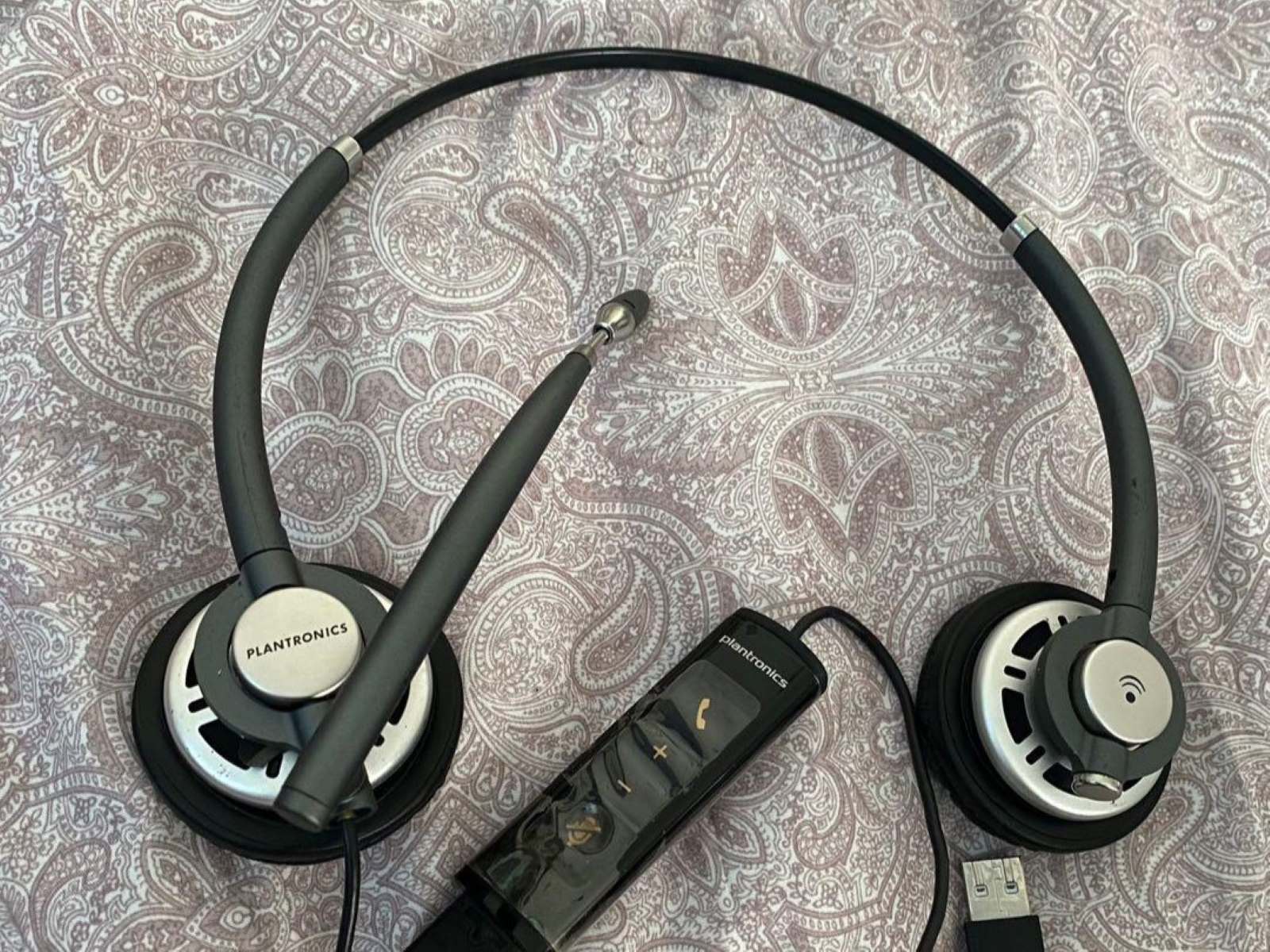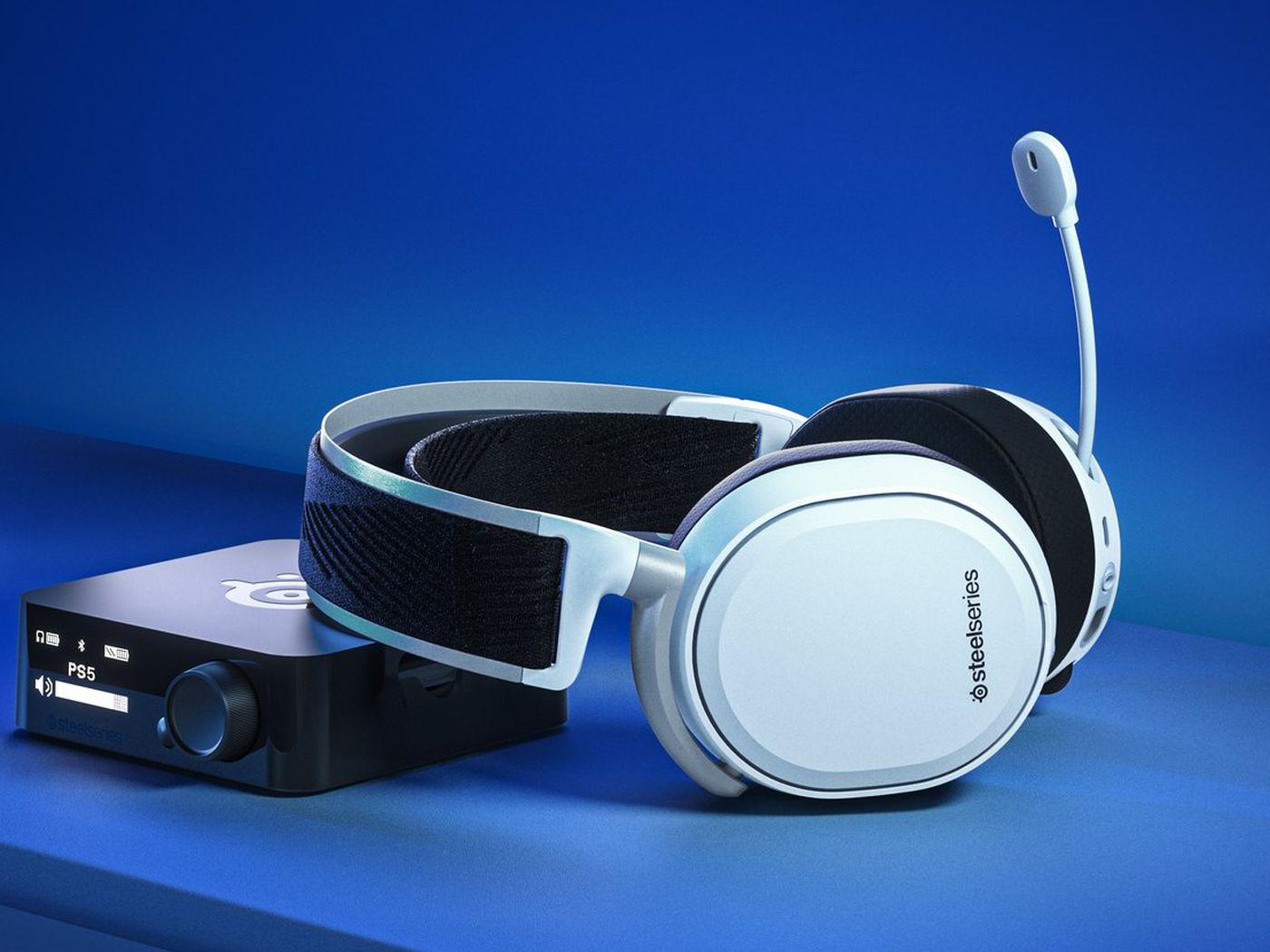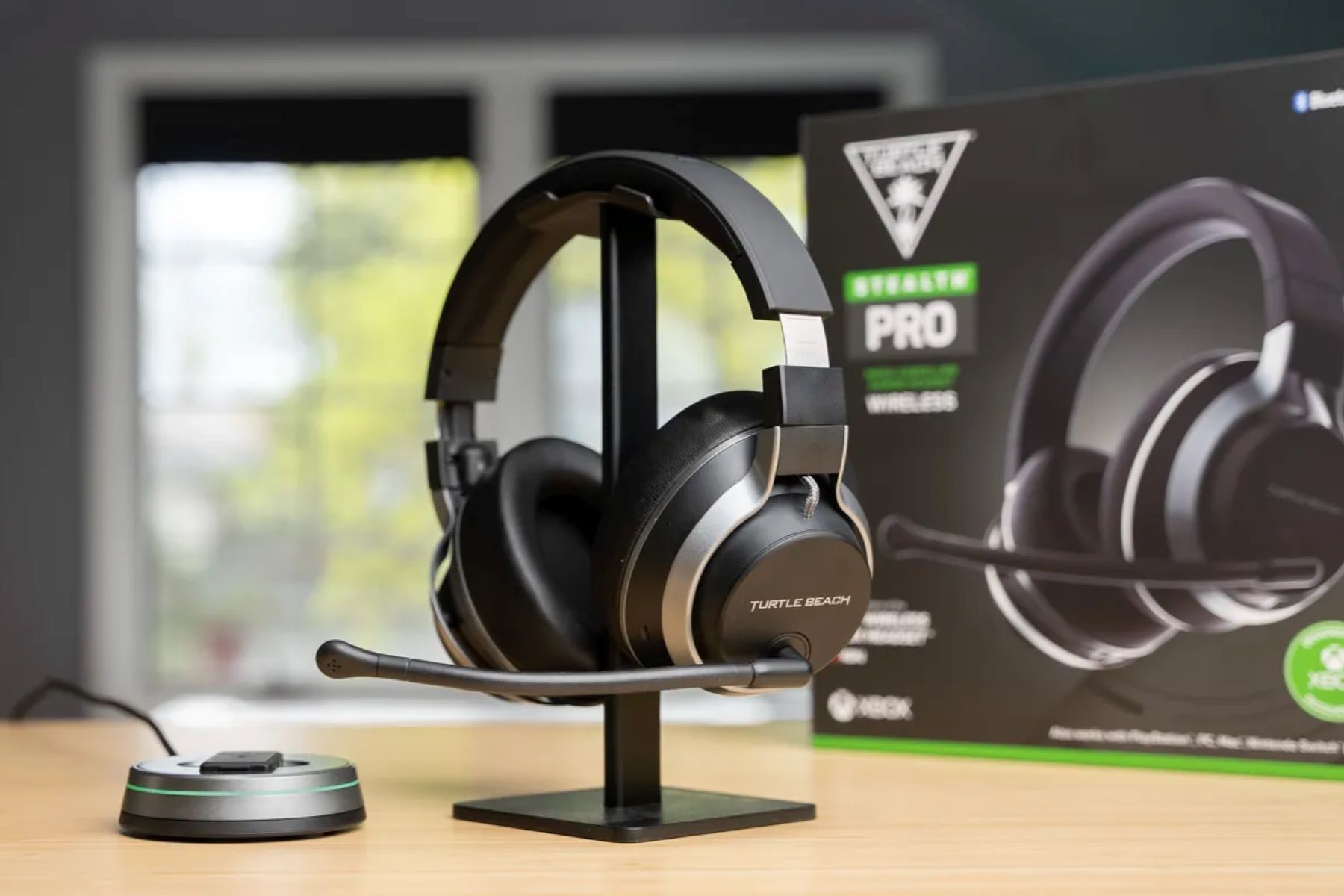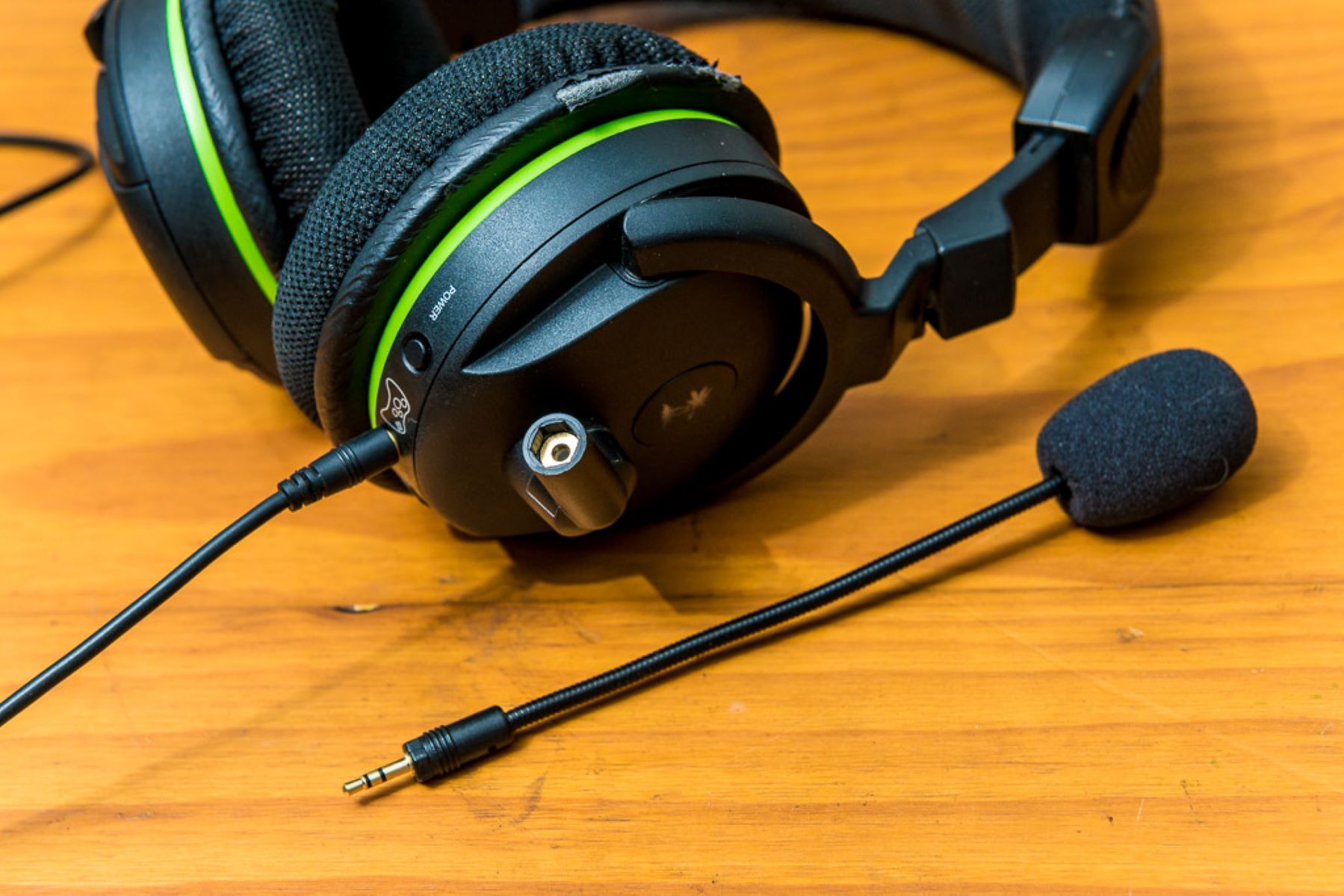Introduction
When it comes to immersive gaming experiences, a high-quality headset is a crucial accessory for Xbox enthusiasts. However, the frustration of encountering connection issues can quickly dampen the excitement of diving into virtual worlds. Whether you're in the midst of an intense multiplayer battle or simply aiming to enjoy the rich audio landscapes of your favorite game, a malfunctioning headset can disrupt the entire experience.
Connection issues with Xbox headsets can manifest in various forms, from intermittent audio dropouts to complete signal loss. These problems often stem from a combination of hardware, firmware, and software-related factors. Understanding the common culprits behind these connection woes is the first step toward resolving them and reclaiming your uninterrupted gaming experience.
In this guide, we'll delve into the prevalent connection issues that Xbox headset users encounter and provide a comprehensive troubleshooting framework to address these challenges. By following the step-by-step solutions outlined in this article, you can equip yourself with the knowledge and techniques needed to tackle connectivity issues head-on. Whether you're a seasoned gamer or a newcomer to the Xbox ecosystem, mastering the art of troubleshooting headset connection problems will undoubtedly enhance your gaming journey.
So, if you've ever found yourself frustrated by erratic audio, dropped signals, or other connectivity hiccups with your Xbox headset, fear not! This guide is here to empower you with the expertise to overcome these obstacles and restore seamless audio connectivity to your gaming sessions. Let's dive into the world of troubleshooting and reclaim the immersive audio experiences that every gamer deserves.
Common Connection Issues
Xbox headset users often encounter a range of common connection issues that can disrupt their gaming experiences. Understanding these prevalent challenges is key to effectively troubleshooting and resolving them. Here are some of the most frequently reported connection issues:
-
Intermittent Audio Dropouts: One of the most frustrating issues experienced by Xbox headset users is intermittent audio dropouts. These sudden disruptions in audio transmission can significantly detract from the immersive gaming experience, causing frustration and distraction.
-
Signal Loss: Another prevalent issue is signal loss, where the headset abruptly loses connection with the Xbox console. This can occur sporadically, leading to unpredictable interruptions during gameplay or communication with fellow gamers.
-
Poor Audio Quality: Some users may encounter issues related to poor audio quality, such as crackling, static, or muffled sound. These issues can compromise the clarity and richness of the audio, detracting from the overall gaming experience.
-
Mic Malfunctions: In addition to audio output issues, Xbox headset users may also face problems with the microphone function. This can manifest as an inability to transmit clear voice input, erratic microphone sensitivity, or complete microphone failure.
-
Compatibility Challenges: Compatibility issues between the headset and the Xbox console or controller can also lead to connection problems. This may arise from outdated firmware, incompatible hardware, or configuration conflicts.
-
Bluetooth Interference: For wireless headsets, Bluetooth interference can be a common culprit behind connection issues. Signal interference from other devices or environmental factors can disrupt the seamless transmission of audio signals.
By recognizing these common connection issues, Xbox headset users can gain insight into the potential sources of their connectivity challenges. In the following sections, we will explore effective troubleshooting steps to address these issues and restore reliable connectivity between Xbox headsets and consoles.
Troubleshooting Steps
Addressing connection issues with Xbox headsets requires a systematic approach to troubleshooting that encompasses hardware, firmware, and software considerations. By following the steps outlined below, you can effectively diagnose and resolve the common connectivity challenges that may arise during your gaming sessions.
-
Checking Hardware: Begin the troubleshooting process by inspecting the physical components of your Xbox headset setup. Ensure that all cables, connectors, and ports are securely connected and free from damage. If you're using a wireless headset, verify that the batteries are adequately charged and that there are no obstructions obstructing the signal path between the headset and the console. Additionally, consider testing the headset on another device, if possible, to determine if the issue is specific to the Xbox console or the headset itself.
-
Updating Firmware: Firmware updates can play a critical role in resolving connectivity issues with Xbox headsets. Check for available firmware updates for both the headset and the Xbox console. Manufacturers often release firmware updates to address compatibility issues, improve signal stability, and introduce new features. By ensuring that your headset and console are running the latest firmware versions, you can mitigate potential compatibility conflicts and enhance the overall performance of your audio setup.
-
Adjusting Settings: Explore the audio and communication settings on your Xbox console to identify potential configuration adjustments that can alleviate connection issues. Pay particular attention to settings related to audio output, microphone input, and wireless connectivity. Experiment with different settings, such as adjusting the audio balance, enabling or disabling specific audio enhancements, and configuring the microphone sensitivity. Additionally, if using a wireless headset, consider re-pairing the device with the console to establish a fresh connection.
-
Environmental Considerations: Environmental factors can contribute to connection issues, especially for wireless headsets. Minimize potential sources of interference by relocating other wireless devices, such as routers or mobile phones, away from the vicinity of the console. Additionally, if you're experiencing Bluetooth interference, try adjusting the positioning of the console and the headset to optimize signal strength and minimize signal obstructions.
By systematically addressing these troubleshooting steps, you can effectively diagnose and resolve a wide range of connection issues that may arise with Xbox headsets. Whether you're contending with intermittent audio dropouts, signal loss, or microphone malfunctions, a methodical approach to troubleshooting can empower you to reclaim the seamless audio connectivity that enhances the gaming experience.
Checking Hardware
When troubleshooting connection issues with your Xbox headset, a crucial first step is to meticulously inspect the hardware components that constitute your audio setup. By conducting a thorough assessment of the physical elements involved, you can identify potential issues and ensure that your headset's hardware is functioning optimally.
Begin by examining the cables, connectors, and ports associated with your Xbox headset. Ensure that all connections are secure and free from any visible damage. In the case of wired headsets, check for any fraying or kinks in the cables that could impede the transmission of audio signals. If using a wireless headset, verify that the batteries are sufficiently charged and that the power indicators on both the headset and the transmitter are displaying the expected status.
In addition to inspecting the headset itself, it's beneficial to evaluate the condition of the Xbox console's audio ports and the controller's connectivity interface. Dust, debris, or foreign objects in these ports can potentially disrupt the connection between the headset and the console, leading to audio dropouts or signal loss. Use a gentle, non-conductive cleaning tool, such as compressed air or a soft brush, to remove any debris that may be present in the ports.
For wireless headsets, consider the physical environment in which the headset operates. Ensure that there are no obstructions obstructing the signal path between the headset and the console. Objects or barriers between the headset and the console can interfere with the wireless signal, leading to signal degradation or intermittent connectivity.
If feasible, test the headset on another compatible device to ascertain whether the issue is specific to the Xbox console or the headset itself. By conducting this test, you can gain valuable insights into the root cause of the connection issues and determine whether the headset exhibits similar behavior on alternative devices.
By meticulously checking the hardware components of your Xbox headset setup, you can lay the groundwork for effective troubleshooting and potentially identify the source of any connection issues. This proactive approach empowers you to address hardware-related issues with precision, setting the stage for a more seamless and immersive gaming experience.
Updating Firmware
Firmware updates play a pivotal role in maintaining the optimal functionality and compatibility of Xbox headsets. When encountering connectivity issues, checking for and applying firmware updates can often serve as a proactive and effective troubleshooting step. These updates are designed to address known issues, enhance signal stability, and introduce new features, ultimately contributing to an improved user experience.
To initiate the process of updating firmware for your Xbox headset, it is essential to first identify the specific model and manufacturer of your headset. Manufacturers typically provide firmware updates through their official websites or dedicated software applications. Visiting the official support page of the headset manufacturer can yield valuable information regarding available firmware updates and the corresponding installation instructions.
Similarly, Xbox console firmware updates are regularly released by Microsoft to address system-level issues and improve compatibility with accessories, including headsets. Ensuring that your console is running the latest firmware version is crucial for maintaining seamless connectivity with your headset.
Before proceeding with the firmware update process, it is advisable to review the release notes accompanying the update. These notes often outline the specific improvements or bug fixes introduced in the new firmware version, providing insight into the potential impact on connectivity and performance.
Once you have identified and downloaded the relevant firmware update for your headset and console, follow the manufacturer's instructions for applying the update. This typically involves connecting the headset or controller to a computer and running the firmware update utility provided by the manufacturer. For Xbox console updates, the process can be initiated directly from the console's settings menu, under the system or device management section.
After successfully applying the firmware updates, it is recommended to perform a comprehensive test of the headset's connectivity and performance. Verify that the previously encountered connection issues, such as audio dropouts or signal loss, have been mitigated following the update. Additionally, assess any new features or improvements introduced by the firmware update to fully leverage the enhanced capabilities of your Xbox headset.
By regularly updating the firmware of your Xbox headset and console, you can proactively address potential compatibility issues and ensure that your audio setup operates at its full potential. This proactive approach not only contributes to resolving existing connectivity issues but also serves to future-proof your gaming experience against emerging compatibility challenges.
Adjusting Settings
Exploring and adjusting the settings on your Xbox console can be a pivotal step in troubleshooting connection issues with your headset. By delving into the audio and communication settings, you can identify potential configuration adjustments that have the potential to alleviate connectivity issues and enhance the overall audio experience.
One of the primary settings to focus on is the audio output configuration. Within the console settings, you can typically adjust parameters such as audio balance, equalization presets, and volume levels. Experimenting with these settings can help in mitigating issues related to poor audio quality, such as crackling or muffled sound. By fine-tuning the audio output to suit the capabilities of your headset, you can achieve a more immersive and clear audio experience during gameplay.
In addition to audio output settings, it's essential to pay attention to microphone input configurations. If you've encountered issues with your headset's microphone, such as erratic sensitivity or poor voice transmission, adjusting the microphone settings can potentially address these challenges. Look for options to adjust the microphone sensitivity, noise suppression, and voice monitoring features. By customizing these settings to align with your specific usage scenario, you can optimize the microphone performance and ensure clear and consistent voice input during gaming sessions.
For wireless headsets, exploring the wireless connectivity settings is crucial. Within the console settings, you may find options to manage Bluetooth pairing, signal strength optimization, and interference mitigation. Re-pairing the wireless headset with the console can establish a fresh and stable connection, potentially resolving intermittent signal loss or Bluetooth interference issues. Additionally, adjusting the positioning of the console and the headset can optimize signal strength and minimize potential signal obstructions, contributing to a more reliable wireless audio connection.
In some cases, enabling or disabling specific audio enhancements or effects can also impact the overall connectivity and audio performance of your headset. Experimenting with features such as virtual surround sound, spatial audio, or audio equalization presets can provide insights into their influence on connectivity stability and audio quality. By systematically adjusting these settings and observing their impact on the headset's performance, you can tailor the audio experience to suit your preferences while addressing underlying connectivity issues.
By delving into the settings on your Xbox console and meticulously adjusting the audio and communication parameters, you can uncover opportunities to enhance the connectivity and performance of your headset. This proactive approach empowers you to fine-tune the audio setup to align with your preferences and address any connection challenges that may have hindered your gaming experiences.
Conclusion
In the dynamic realm of gaming, audio connectivity serves as a cornerstone of the immersive experience, shaping the way players engage with virtual environments and communicate with fellow gamers. The journey of troubleshooting Xbox headset connection issues has unveiled a multifaceted landscape, encompassing hardware scrutiny, firmware updates, and configuration adjustments. By navigating through these troubleshooting steps, you've embarked on a quest to reclaim the uninterrupted audio connectivity that enriches your gaming odyssey.
As you conclude this troubleshooting expedition, armed with newfound insights and techniques, it's essential to reflect on the transformative impact of effectively addressing connection issues. Beyond the technical intricacies, this journey embodies the resilience and adaptability inherent in the gaming community. The ability to navigate and overcome obstacles, whether in the virtual realm or the realm of technology, underscores the indomitable spirit of gamers worldwide.
By meticulously checking the hardware components, from cables to ports, you've laid the foundation for a robust and reliable audio setup. This proactive approach not only addresses immediate connectivity issues but also fortifies your gaming arsenal against potential hardware-related challenges in the future. Furthermore, embracing firmware updates as a proactive measure underscores your commitment to harnessing the full potential of your Xbox headset. The pursuit of the latest firmware versions signifies a dedication to optimizing performance and compatibility, ensuring that your audio setup remains at the forefront of innovation.
Delving into the intricacies of audio and communication settings has empowered you to tailor the audio experience to your preferences while mitigating connectivity hurdles. The deliberate adjustments made to audio output, microphone input, and wireless connectivity settings have ushered in a new era of personalized audio immersion, free from the shackles of connectivity woes. This journey of exploration and adaptation epitomizes the spirit of innovation and resilience that defines the gaming community.
As you emerge from this troubleshooting endeavor, equipped with a deeper understanding of Xbox headset connectivity and a repertoire of troubleshooting techniques, the horizon of gaming experiences beckons with renewed allure. The seamless audio connectivity you've reclaimed serves as a testament to your unwavering commitment to the immersive world of gaming. With each obstacle surmounted, you've fortified your position as a stalwart guardian of uninterrupted audio connectivity, ready to embark on new gaming adventures with unwavering confidence.
In the tapestry of gaming, the art of troubleshooting connectivity issues is not merely a technical pursuit; it is a testament to the unyielding spirit of gamers who navigate challenges with unwavering resolve, emerging stronger and more resilient with each triumph. As you return to the virtual realms, armed with the wisdom gleaned from this troubleshooting odyssey, may your gaming experiences be enriched by the seamless audio connectivity that fuels your adventures in the digital domain.







